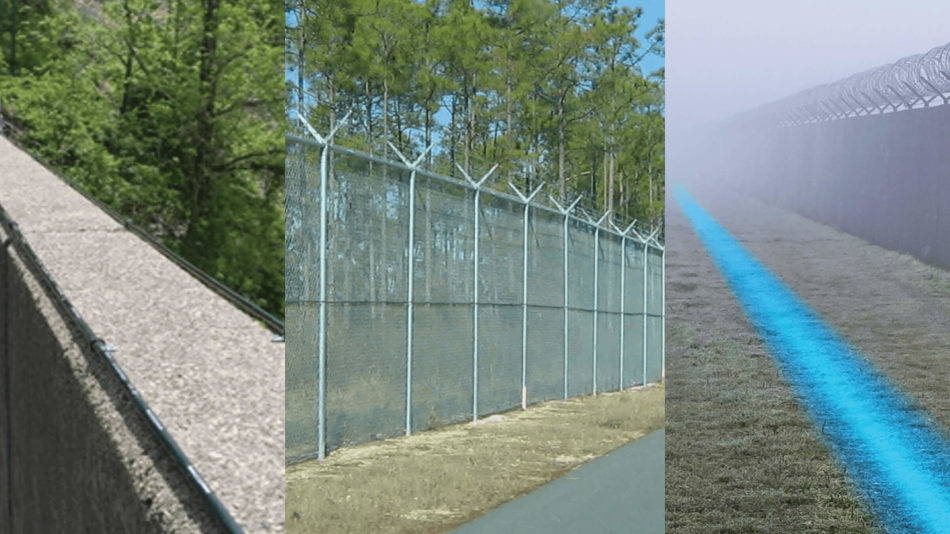The Ultimate Guide to Fiber Optic Safety Equipments for Your Business
In an era where security concerns are extremely important for organizations, recognizing the complexities of fiber optic technology can be transformative. This overview describes how integrating fiber optic safety systems not only boosts data security however additionally uses advantages like resistance to disturbance and real-time surveillance abilities.
Understanding Fiber Optic Innovation

The core of a fiber optic cable television is composed of a thin glass or plastic center, surrounded by a cladding layer that shows light back right into the core. Single-mode fibers are developed for long-distance transmission, while multi-mode fibers are ideal for much shorter distances, typically utilized within buildings.
Fiber optics are not just quicker but likewise much more protected than traditional wiring. Their fundamental resistance to electro-magnetic interference and the problem of tapping right into the signal without detection make them a favored selection for businesses prioritizing data integrity and security. As companies significantly depend on safe and secure and reliable communication systems, understanding fiber optic technology becomes essential for educated decision-making.
Trick Benefits of Fiber Optic Protection
When thinking about safety alternatives for a business, the benefits of fiber optic systems are especially compelling. Fiber optic innovation offers outstanding data transmission rates and bandwidth capability, making it excellent for managing high-resolution video clip feeds from surveillance cameras. This capability makes certain that safety and security personnel obtain real-time data, enhancing total action times to potential safety hazards.
Furthermore, fiber optic cable televisions are inherently immune to electromagnetic interference, which can compromise the stability of conventional copper-based systems. This resistance makes certain that the data transmitted remains secure and undisturbed, supplying an extra trusted safety infrastructure. In addition, fiber optics are much less prone to physical damages, as they are made from glass as opposed to steel, minimizing upkeep expenses and downtime.
Another substantial advantage is the raised scalability of fiber optic systems. As company needs evolve, fiber networks can be conveniently broadened to accommodate additional security tools without considerable overhauls to the existing infrastructure. Ultimately, fiber optic systems offer boosted cybersecurity functions, consisting of security capacities that safeguard sensitive data from unauthorized access. Jointly, these benefits make fiber optic safety and security systems a robust choice for services looking for to enhance their safety and security actions.
Setup Process and Considerations
Taking into consideration the intricacies entailed, the installment process of fiber optic security systems needs cautious preparation and execution. The first action includes a detailed site evaluation to determine optimum places for cabling and equipment. This assessment ought to take into consideration ecological elements, existing infrastructure, and potential susceptabilities.

Furthermore, the installation has to this link abide by regional building regulations and market standards. This might include coordinating with various important link stakeholders such as structure supervisors, IT teams, and protection workers to guarantee smooth integration with existing systems.
Post-installation, strenuous screening is necessary to verify system efficiency and determine any kind of problems that may arise. By focusing on these considerations during the installment process, companies can guarantee a durable and reliable fiber optic safety system that satisfies their particular security needs.
Most Recent Developments in Fiber Optic Safety
Recent advancements in fiber optic technology have actually dramatically boosted the capacities of safety systems for organizations. One of the most significant advancements is the combination of fiber optic sensors that can identify vibrations and breaches along the border of a center. These sensing units provide real-time surveillance, making it possible for rapid action to potential breaches.
Additionally, the development of dispersed fiber optic noticing modern technology allows for the continuous surveillance of big locations with a solitary fiber cord. This approach not just lowers setup prices but likewise improves the dependability of keeping an eye on systems by eliminating the demand for numerous, different sensing units.
Moreover, innovations in multiplexing methods have made it possible for services to transfer large quantities of data over fiber optic networks, boosting the capacities of video monitoring systems. High-def video clip feeds can now be sent out over long distances without loss of top quality, making certain that safety and security workers have accessibility to clear and actionable information.
Finally, the use of fabricated intelligence (AI) combined with fiber optic systems is reinventing risk discovery. AI algorithms can assess information from fiber optic networks to identify unusual patterns or habits, allowing for aggressive security measures. These advancements collectively represent a significant jump forward in fiber optic safety and security technology.
Picking the Right System for Your Organization
Picking the proper fiber optic security system for your organization is important for ensuring ideal security and assurance. To make an enlightened option, assess your details protection demands, thinking about aspects such as the size of your premises, the nature of your procedures, and possible susceptabilities.
Begin by reviewing the degree of security called for; for example, high-risk settings might require innovative systems with incorporated monitoring and invasion detection capacities. Next, consider scalability; as your company grows, your safety system ought to can expanding to fit raised demands without significant overhauls.
Additionally, explore the dependability and performance of numerous systems. Look for providers with recognized online Related Site reputations and consumer testimonials that vouch for their solution high quality. It's likewise suggested to ask about the modern technology's compatibility with existing infrastructure, ensuring a seamless integration process.
Final Thought
In final thought, fiber optic security systems offer a robust option for enhancing service safety and security facilities. The most recent innovations further bolster the efficiency of these systems, guaranteeing that companies remain safe and secure and adaptable in an ever-evolving hazard landscape.